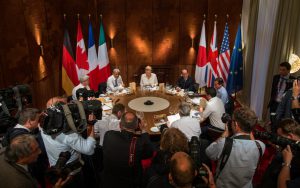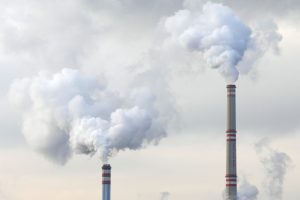As China readies its much anticipated climate plan, submissions from developed countries already filed with the UN show that current commitments fall up to 70% short of what will be needed to put the world on a pathway to avoiding runaway climate change.
China is expected to highlight a carbon intensity target in addition to an already-announced peak, but will likely shun an absolute cap and omit reference to longer term targets, meaning that it’s hard to gauge the scale of its longer-term effort.
The world’s largest emitter is likely to maintain its stance that fully developed countries should take on the main burden of making emissions cuts, a view likely to be contested strongly by the US and other rich countries.
And in view of recent research from Climate Action Tracker, developed countries are unlikely to do the heavy lifting required if China is unwilling or unable to engineer a big drop in its own emissions after its promised 2030 peak.
The figures show just how far away many OECD nations are from putting the world on the path that would restrict a rise in global average temperatures to 2C.
“There is a significant emissions gap at the global level, and the G7+EU, which is responsible for nearly a third of global emissions, has a substantial role to play in closing it,” the research said, saying that the EU and US still have much to do in scaling up their commitments, while proposals from Canada and Japan are particularly inadequate.
As expected, this month’s largely technical meeting in Bonn aimed at smoothing a path towards a deal at the Paris failed to make much progress.
There, discussions on a future scaling up of ambition failed to gain traction, meaning that negotiating a so-called ‘ratchet’ or review process could be one of the toughest nuts to crack in future rounds of talks.
A report from the International Energy Agency released on Monday said current pledges from more than 30 countries suggest that global emissions will continue to rise until at least 2030, meaning the world will overshoot the 2C threshold.
The extent to which national climate plans – known in UN jargon as Intended Nationally-Determined Contributions – close the so-called ’emissions gap’ will be a good measure of the G7+EU’s contribution to setting the world on a below 2C pathway, Climate Action Tracker says.
Divisive
But politically, there is little evidence that developed countries are prepared to do much more by 2025 or 2030 than they have outlined already in national climate plans, particularly in the US, where action to cut greenhouse gases is highly divisive in Congress.
Meanwhile, the EU has struggled to keep coal-intensive countries such as Poland onboard in protracted negotiations about how deep the bloc’s target should be.
Although the US and EU say they are taking real steps to cutting their emissions through shutdowns of old coal-fired power plants, a switch to natural gas and increased use of renewable energy efficiency and low carbon technologies, the scale of the cuts since so far since a 1990 baseline doesn’t look so very impressive, Climate Action Tracker says.
Extra effort?
The US’ 2025 target, which aims to cut greenhouse gases up to 28% below 2005 levels, would only mean a reduction of 10% below 1990 levels from the world’s second-largest emitter, the research adds.
In the EU, much of its 2030 emissions reductions have been achieved already, helped in part of the shutdowns of heavy industry in former communist bloc countries, although retirements of coal plants under clean air laws and a roll-out of renewable energy in countries such as Germany has also helped.
Not withstanding recalcitrant members such as Poland, the question persists whether the 28-nation bloc could have been a good deal more ambitious.
“Current policies bring the EU close to achieving its INDC (23-35% below 1990 levels by 2030, excl. LULUCF) compared to the 40% below 1990 levels it proposes,” Carbon Tracker points out.
G7’s long-term target
And even if the EU was to scale up its 40% target at a later date, it would likely buy international carbon offsets to do so, the use of which is highly controversial among developing countries.
Caution among OECD countries on their near-term targets contrasts sharply with the bold, but long-term and non-binding promise by G7 countries last week to completely phase out carbon emissions from energy use by the end of the century.
Those leaders who raised a toast in a Bavarian meadow for the German-hosted G7 meeting will of course be long gone by then, but many of them will be there in Paris, under strong pressure to make the sacrifices required to avoid the worst of a warming climate.






